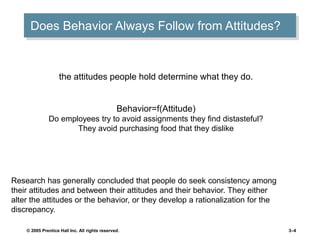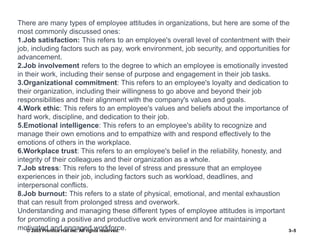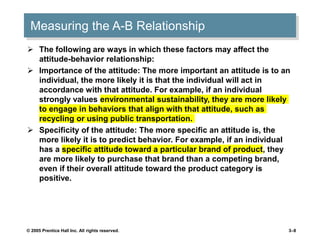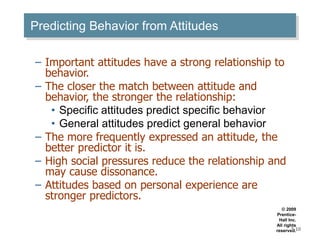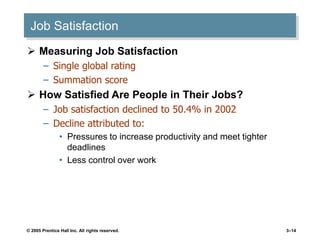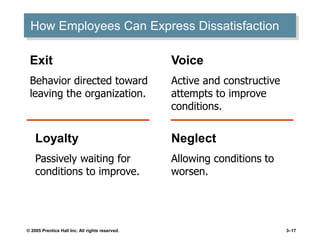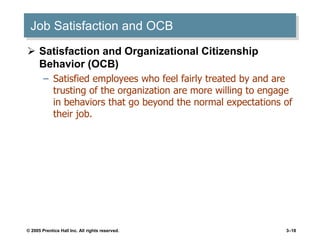This document summarizes key concepts around organizational behavior, values, attitudes, and job satisfaction from Chapter 3 of the textbook Organizational Behavior by Stephen P. Robbins. It defines attitudes and their three components - affective, cognitive, behavioral. It discusses how attitudes do not always predict behavior and factors that influence the attitude-behavior relationship like importance and specificity of attitudes. It also covers theories of cognitive dissonance and self-perception. Additional topics include measuring job satisfaction, its relationship to employee performance, absenteeism, turnover, and organizational citizenship behaviors.



